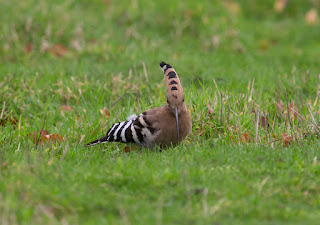Strong winds, wintery showers which included a fall of snow over Norwich meant that birding on Saturday would be challenging. However, signs from the coast were of good numbers of passing seabirds including quite decent numbers of Little Auks, Leach's Petrel's and scarce Skuas.
So on Sunday, Nick and I arrived at Cley beach car-park for 8am and set ourselves up on the shingle for a sea watch which was to feature eight Little Auks, one Great Northern Diver, several small parties of Common Scoter, Teal, Wigeon, Goldeneye, Red-breasted Mergansers and Dark-bellied Brents. During all of this a lone Snow Bunting kept us company as it fed within a few feet of our tripods. Somewhere between 9am and 10am the flow of birds slowed to a trickle and the rain came in from the north west in sheets, we called time and headed back to the car to dry off and warm up.
From Cley we headed westwards to Titchwell stopping en route to check around Choseley Barns where we had a very sizable gathering of Pink-footed Geese as well as a flock of Fieldfares and Yellowhammers.
At Titchwell we walked north along the main path to the beach checking without success for Water Pipits along the way. At the beach there were huge numbers of gulls (mainly Black-headed, Common and Herring) feeding on the washed up bodies of many, many starfish.
A message on Birdguides reported three Shorelark at Thornham Point so we set off west along Titchwell Beach but failed to connect with these birds sadly. However, we did have four Snow Buntings which included a very smart male bird. We both tried to apply a little stealth by creeping up on the birds for a photo but they were surprisingly wary and fast moving so never really came that close for photos.
 |
| Male Snow Bunting, Titchwell Beach, Norfolk - 22 November 2015 |
 |
| Snow Bunting, Titchwell Beach, Norfolk - 22 November 2015 |
 |
| Me (looking tired or grumpy or both) waiting for the Snow Buntings to approach (photo by Nick Watmough) |
By the time we arrived back to the car the evening had drawn in and the light was as good as gone - which was also true of the Little Auk which had been sitting on Salthouse duck pond - pity as I subsequently saw some excellent up close photos of this bird, never mind!
















